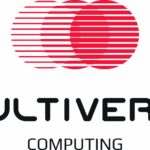
In a new technological leap, a team of researchers has been able to use physics and photonic devices applications to detect and shape light for communications and computing uses among other functions.
The team led by Xu Yi, an assistant professor of electrical and computer engineering at the University of Virginia School of Engineering and Applied Science, also took cognizance of the prediction that the quantum computing market will spiral to 65 billion dollars by the year 2030, due to its potential to help solve seemingly complex issues like drug discovery.
So where do quantum computing come into play?
Drug discovery, an example that should suffice has the understanding of drug interaction for example premised on the inclination of a pharmaceutical company to instigate the interaction of two of more molecules. There comes in the challenge
But then a challenge is a call to action.
Scientists knowing that each molecule comprises of hundred of atoms have to fashion out ways the atoms will array themselves when their molecules are brought to the fore and introduced. The number of possible configuration may be deemed uncountable as they surpass the number of atoms in the wholeuniverse.
So there is an expensive, dynamic data problem and this is where the technology of quantum computing comes in. A quantum computer can represent, solve and take numbers of possible configurations.
The Xu Yi led research group that has in its team Olivier Pfister, a professor of quantum optics and quantum information at UVA, and Hansuek Lee, Assistant professor at the Korean Advanced Institute of Science and Technology used photonic ship, the size of a penny, to create a scalable quantum computing platform that will help reduce to a very large extent the number of devices required to have quantum speed.
The technology of quantum computation has a new way information is being processed, away from the old order. In the new method, the Personal Computer processes information in long strings of bits with one bit having the capacity to hold one or two values, zero or one. The quantum computer has information processed in parallel ways, an indication that one does not have to wait for the associated sequence of information to be processed before more is computed.
The unit of information of quantum computers is called a qubit, a hybrid that can either be one or zero simultaneously. A full spectrum of variables between one and zero, with the values to the right of the decimal point, are covered by a quantum mode.
The team experimental results dubbed: “A Squeezed Quantum Microcomb on a Chip.” was recently published in journal ‘Nature Communications’ had the National Science Foundation’s Engineering Quantum Integrated Platforms for Quantum Communication program supporting the project with grants, had Zijiao Yang, a Ph.D. student in physics, and Mandana Jahanbozorgi, a Ph.D. student of electrical and computer engineering, as the paper’s co-first authors.
Different approaches are being mooted by researchers to produce the required number of qumodes that will be needed to have quantum speeds.
It would be recalled that one of the co-authors of the paper, Olivier Pfister had in 2014 generated over 3000 quantum modes in a bulk optical system but the use of massive quantum modes will require large footprints needed to take in the thousands of mirrors, lenses and other components that would be needed to run an algorithm and perform other operations.
In the words of Pfister:
“The future of the field is integrated quantum optics. Only by transferring quantum optics experiments from protected optics labs to field-compatible photonic chips will bona fide quantum technology be able to see the light of day. We are extremely fortunate to have been able to attract to UVA a world expert in quantum photonics such as Xu Yi, and I’m very excited by the perspectives these new results open to us.”
The Yi’s led research team not done, created a quantum source in an optical microresonator, a ring-shaped, millimeter-sized structure that covers the photons and produces microcomb, a device that efficiently converts photons from single to multiple wavelengths.
Optical power is built when light circulates inn proximity with the ring, while the power built helps with the enhancement of opportunities for proton interaction, leading to the production of quantum entanglement between light fields in the microcomb device. The team were able to verify that 40 qumodes were gotten from one microresonator on a chip, a prove that quantum modes multiplexing can suffice in integrated photonic platforms.
“We estimate that when we optimize the system, we can generate thousands of qumodes from a single device,” Yi said.
Though errors are inevitable, the multiplexing method opens a pathway where the quantum computing technology will be applicable for real-world conditions. Qubits numbers required to cover for errors could be more than a million as a result of increase in device numbers but multiplexing helps to reduce the numbers of devices by two or three orders of magnitude.
Yi was emphatic when he said:
“We are proud to push the frontiers of engineering in quantum computing and accelerate the transition from bulk optics to integrated photonics. We will continue to explore ways to integrate devices and circuits in a photonics-based quantum computing platform and optimize its performance.”
Credit: “A squeezed quantum microcomb on a chip” by Zijiao Yang, Mandana Jahanbozorgi, Dongin Jeong, Shuman Sun, Olivier Pfister, Hansuek Lee and Xu Yi, 6 August 2021, Nature Communications.
DOI: 10.1038/s41467-021-25054-z
Discover more from TechBooky
Subscribe to get the latest posts sent to your email.







